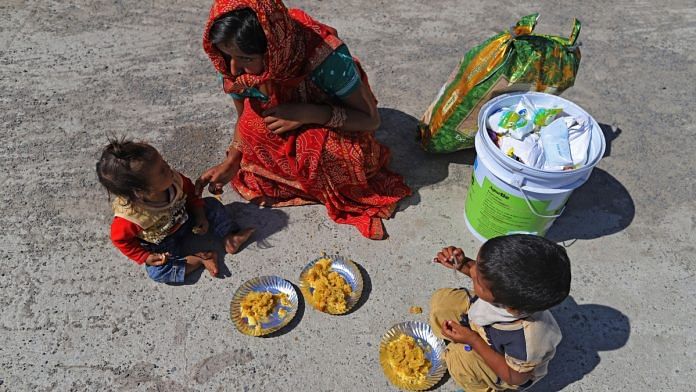Washington: Global hunger will surge by about a third this year, driven by lingering income losses from the pandemic, according to the U.S. Department of Agriculture.
The department’s annual assessment of food security in 76 middle- and low-income nations that are past or current recipients of U.S. food aid estimates an additional 291 million people in those countries won’t have enough to eat in 2021. That comes on top of a huge spike in hunger last year as the pandemic unleashed economic distress.
The United Nations earlier this month estimated global food insecurity in 2020 had already hit the highest level in 15 years as income loss made healthy diets out of reach for about a 10th of the global population. Things are projected to get worse in 2021 as commodity inflation and disrupted supply chains sent world food prices to the highest in almost a decade, particularly bad news for poorer countries dependent on food imports.
The large-scale human suffering that’s driven by hunger is reaching new depths of bleakness. A study published in Nature Food journal this month projected the exacerbated undernutrition among mothers and children in low-and middle-income countries will cost the world $30 billion in future productivity losses. Rising hunger for hundreds of millions of people, primarily in Asia and Africa, also raises the risk of political instability.
Overall, 1.2 billion people in the 76 countries covered in the USDA report–representing 31% of their population–will be food-insecure this year. Prior to the pandemic, the USDA estimated 761 million people, or less than 20% of that population, fell into the category in those countries.
Most of the additional people the USDA expects to fall into food insecurity this year are in Asia, which accounts for 72% of the increase. Bangladesh, India, Pakistan, and Indonesia will see particularly large jumps in the number of people without enough food, according to the report. Sub-Saharan Africa accounts for 21% of the global increase in undernourished people.
Yemen, Zimbabwe and Congo are projected to have the highest prevalence of hunger, with more than 80% of the population in each of the countries unable to get enough to eat.
The primary driver of rising food insecurity is the persistent drop in income in the countries compared with pre-pandemic levels, according to the report. The authors cautioned that the projections didn’t consider the potential impact of climate change, armed conflict or political or economic instability.
The department classifies someone food-insecure if they are unable to maintain a diet of at least 2,100 calories a day, considered a minimal level to stay active and healthy.-Bloomberg
Also read: Celebrate Tata, Premji philanthropy, but don’t pull down traditional charity of Indians






